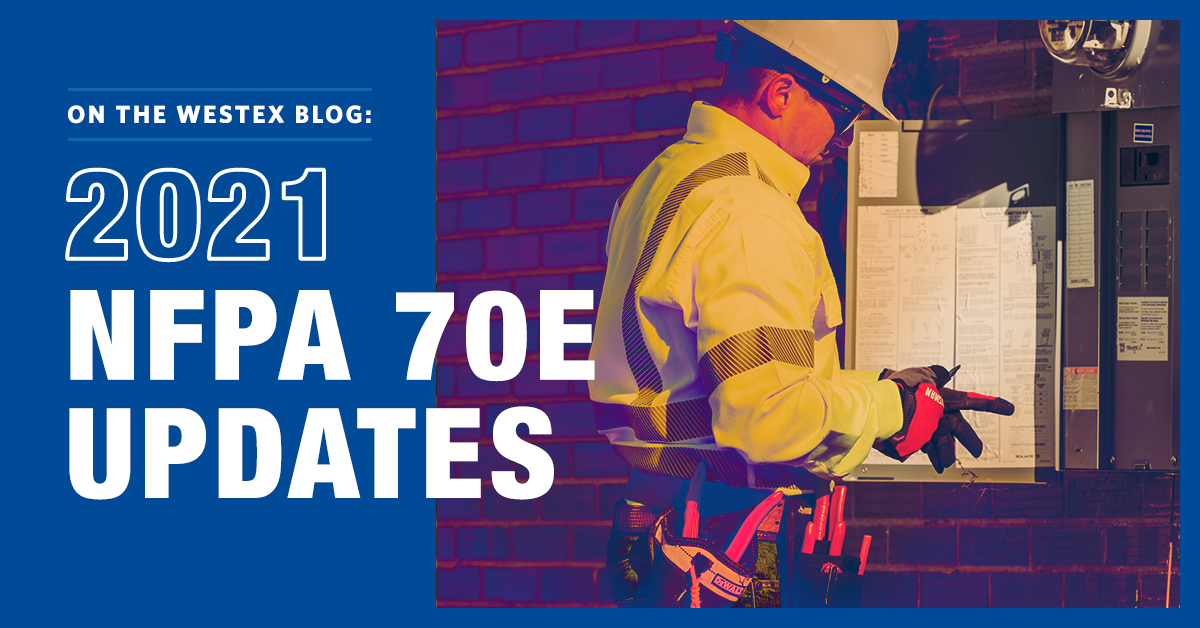
Five NFPA 70E Updates to Note for Your PPE Program
General 15 Jun 2021
Setting the tone for the latest edition, the 2021 NFPA® 70E® Standard cover prominently features the hierarchy of risk controls, first introduced in the 2018 edition. Recommitting and reemphasizing the importance of the hierarchy of risk controls, the cover—and the standard as a whole—draws attention to this tool, which helps the electrical industry identify risk prevention and mitigation controls for those working on energized systems. Many of the updates and changes found in the 2021 edition bring the hierarchy of risk controls into sharper focus.
So what does that mean for personal protective equipment (PPE) use? As the last line of defense, PPE, and especially FR/AR garments, provide mitigative protection against arc flash occurrences. PPE can help reduce burn severity and be the difference between sustaining a life-altering injury should the worst occur. While much of the 2021 edition’s guidance on PPE remains similar to the 2018 edition, there are five changes that safety managers should note. Some changes are primarily related to PPE, while others have secondary impacts on PPE usage—yet all five are crucial consideration points when building or evaluating your PPE program as part of the hierarchy of risk controls.
- Solidifying outer layer guidance
Reference Section 130.7 (9) Factors in Selection of Protective Clothing (b)
This section helps clarify how outer layers should conform to NFPA 70E®. Should you opt to wear an outer layer for weather-related reasons or for high-visibility safety needs, the outer layer does not necessarily need to exceed the estimated incident energy exposure of a given task if it is not part of an arc-rated layered system. So long as the under-layer garment is arc-rated and tested to achieve equal or greater incident energy protection, the outer layer can simply be FR/AR.
- Adding rigor around capacitor work
Reference Article 360 Safety-Related Requirements and Informative Annex R – Working with Capacitors
One of the most significant additions to the 2021 NFPA 70E® is the inclusion of new guidance surrounding capacitor work. When assessing the risks associated with capacitor-related jobs that store energy exceeding the outlined hazard thresholds, workers should adhere to the overall risk assessment procedure outlined in Chapter 1. Essentially, when a system remains energized after power removal, a hazard risk exists and, therefore, must be treated as an energized system. Capacitor voltage and stored energy must be determined and a qualified person working on the equipment should be trained in and familiar with the hazards, such as shock, arc flash/blast and the risk controls required to reduce the likelihood of occurrence and severity of injury. While work is completed to discharge the system to establish an electrically safe work condition (ESWC), PPE comes into play. Remember, until the absence of voltage is verified, PPE must be worn!
- Expanding the risk assessment procedure scope
Reference Article 110.5 (H) (1) – Elements of a Risk Assessment Procedure
NFPA 70E® now includes an informational note indicating that specifying an additional qualified person as a requirement for a job is acceptable. The note goes on to elaborate on required training and PPE that a support person should have. While not required for compliance, the informational note does encourage another safety tool that could help save lives, especially in situations where a task has a high risk of shock or arc flash occurrence.
- Clarifying current guidance
Reference Table 130.5 (C) and Article 130.7 (C) PPE (1) General
Some new clarity was added throughout the 2021 NFPA 70E®, notably in Table 130.5 (C). The table note now provides additional details on what a “yes” means within the context of the “Likelihood of Occurrence” column. Now, when “yes” appears in that column, it means that an arc flash incident should be considered as likely to occur. Safety managers should use this input, along with the potential severity of the arc flash incident, to arrive at appropriate preventative and protective measures—of which PPE is a key control, especially when looking to reduce injury severity.
In addition, an information note in Article 130.7 (C) PPE (1) General provides alternative risk reduction methods when faced with a task that has an estimated incident energy greater than the arc rating of commercially available PPE. The note goes on to outline non-contact proximity test instruments, to system-designed options and increased work distances that can be employed to reduce the incident energy level. This does not eliminate the need for PPE; rather, it allows workers to use PPE available to them without facing greater risk than necessary.
- Revising incident energy calculation
Reference Annex D – Incident Energy and Arc Flash Boundary Calculations Methods
This annex was revised and now references IEEE 1584 – 2018 - Guide to Performing Arc Flash Hazard Calculations as the new preferred method of calculation. IEEE 1584 – 2018 is a revision of IEEE 1584 – 2002, and the latest version is considered a more accurate arc flash hazard calculation method. Using this more accurate calculation method, safety managers can be more confident in and comfortable with their PPE selections.
NFPA 70E® is a major standard for the electrical industry yet can be complex in nature. The team at Westex®: A Milliken Brand is here to help you understand the standard and what it could mean for your job site. Contact us today to discuss your safety program—including PPE usage—in greater detail.


